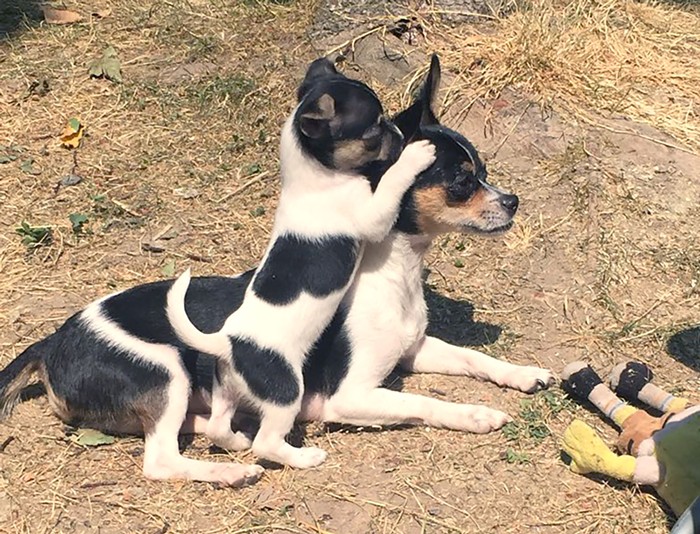Despite what Donald Trump's science advisers will tell you, evolution is a very real phenomenon. This upsets biblical literalists, who believe that man was created by a mythical father figure who has magical powers and yet somehow decides to live in the clouds instead of, say, Bali. (Women, of course, were created as a sort of companionate afterthought.) To those not fully indoctrinated in biblical teachings, this theory of life sounds patently insane.
But evolution is kind of nutty, too. Not because humans evolved from an apelike ancestor (how can that be hard to believe? I personally know several very apelike people), but because the Pekinese in my old boss's handbag evolved from a goddamn wolf.
The genetic variety of dogs is truly remarkable. The smallest dogs on the planet, Chihuahuas, can weigh less than five pounds. The largest dogs, like Great Danes, can weigh more than 150 pounds and reach more than seven feet in height when standing on their hind legs (which, frankly, sounds terrifying). That's the equivalent size difference between a human and an elephant, but within the same species. How the hell did this happen?
When it comes to dog breeds, the answer is obvious: We did it. For thousands of years, humans have been breeding dogs to meet our own needs. Take the Pekinese. Zuzan (pronounced Susan), my old boss's purse dog, is the descendant of dogs bred more than 2,000 years ago as companions to members of the Chinese Imperial Court. Fluffy little lap dogs exist because humans created them through selective breeding. We're the gears behind that evolution.
However, as much as we manipulate dogs, dogs manipulate us, too. They do it by making us love them. In the United States and other developed nations, dogs largely live in people's homes. But an estimated two-thirds of dogs across the world are feral, according to Clive Wynne, an expert in the field of anthrozoology (or human-animal interactions) at Arizona State University and the author of the forthcoming book Dog Is Love: Why and How Your Dog Loves You. They aren't truly "wild"—most scavenge through human garbage for food—but they don't live in a home with dog beds and kibble, either.
The survival rate for street dogs is low, in part because dogs themselves make bad parents. This is one thing that separates them from their ancestors. "Wolves have a beautiful family life," Wynne told me. "The parents care for the young for a couple of years. Dogs are not like that. Dog fathers have their brief starring moment and then they go on their way. Even dog mothers only do the absolute minimum of mothering." Unlike wolves, female dogs nurse for only about eight or nine weeks before they kick their pups out of the nest.
"That's a bad moment in a dog's life," Wynne says. It's also the moment when human intervention may be a pup's best hope of survival. "I wanted to know if it could be the case that dog pups are cutest just at the age when humans can make the biggest difference in their survival, and that's exactly what we found." In a study published last year, Wynne showed people pictures of dogs at different ages and asked how cute they were. "Sure enough," he said, "the cuteness of a dog pup peaks at 8, 9, 10 weeks of age, which is when their mother would be kicking them out and they are at very, very high risk of failing to thrive and dying."
Unless, that is, some human steps in, either by adopting the pup or at least throwing it some food scraps. Dogs are cute, in other words, because it makes fools like us want to save them.














